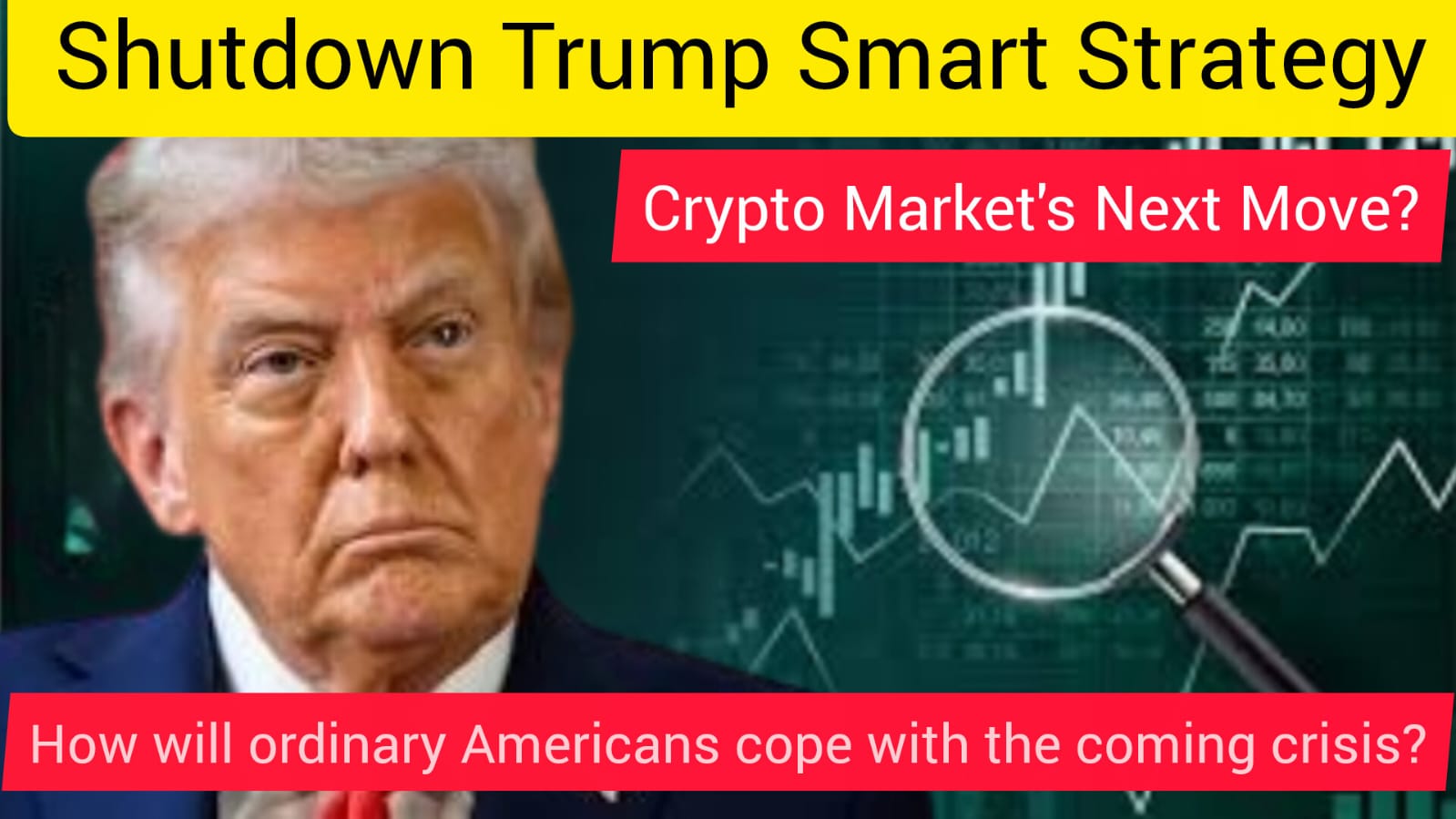The United States entered a partial government shutdown on October 1, 2025, after the Senate failed to pass legislation to extend funding. Wikipedia+3Reuters+3Reuters+3 In response, former President Donald Trump and key adviser Russell Vought are pushing for sweeping spending cuts — making this a high-stakes test for Trump’s political future, the nation’s stability, and even crypto markets.
🏛️ Trump’s Bold Play: Smart Strategy or Self-Inflicted Risk?
Why Trump Might Bet on a Shutdown
Projecting fiscal resolve
By allowing a shutdown rather than compromising early, Trump can signal that he takes spending discipline seriously — a key issue for his conservative base.Leverage negotiations
The threat of closure forces Democrats to make hard trade-offs on health subsidies, Medicaid cuts, or discretionary programs. Republicans hope this is a pressure tactic, not a long-term posture.Galvanizing supporters
Extremes often energize the core base. Showing he’s willing to endure disruption might strengthen his narrative as a leader who doesn’t flinch.
The Dangers He Faces
Blame and backlash
Ordinary Americans feel the pain first: furloughed workers, delayed services, paused permits. In past shutdowns, public sentiment has often shifted toward the government being dysfunctional.Economic drag
A White House memo warns of $15 billion in lost GDP per week if the shutdown drags on. Politico The uncertainty also chills business investment and consumer sentiment.Regulatory & market fragility
Key agencies like the SEC and CFTC are already furloughing staff, which could delay IPOs, ETF approvals, or oversight of financial markets (including crypto). ReutersInternal rifts
If moderate Republicans or independents swing away from full-throttle tactics, Trump risks fracturing his coalition just when unity matters most.
Verdict (for Trump’s Prospects)
If this shutdown is short, controlled, and framed deftly — Trump may emerge politically strengthened. But if it runs long or inflicts visible pain, it could erode support even within his party. This was a gamble — and one that will be judged by its outcome.
🇺🇸 Impact on the Nation: Strength or Strain?
Potential Upsides
Forced policy clarity
Shutdowns make trade-offs stark and public. Politicians are pressured to articulate which programs must be saved and which should be cut.Fiscal reassessment
Some government functions and spending lines may face renewed scrutiny, with a chance to eliminate redundancies or low-priority programs.Electoral drama
The alignment of blame and credit may sharpen voter choices in upcoming elections, clarifying which party is seen as responsible.
Costly Consequences
Government paralysis
With many agencies shutting or operating in reduced capacity, essential services — from environmental cleanup to scientific research — are delayed. Reuters+2Reuters+2Debt & confidence risks
The U.S. already faces fiscal stress. Repeated shutdowns could harm sovereign credibility and slow global capital flows. Reuters+1Human toll
Hundreds of thousands of federal workers are furloughed or working without pay. Programs like health, welfare, and food assistance could be disrupted. AP News+3Wikipedia+3Reuters+3Political polarization deepens
With funds frozen for transit projects in Democratic states ($18B held) and energy funding in red states, the shutdown becomes a tool of political warfare. Reuters+1
Bottom line: The political calculation is precarious. A swift resolution may reset the narrative; a prolonged standoff could damage institutions, trust, and U.S. global standing.
💱 Crypto & Markets: Riding the Shockwaves
In a world of uncertainty, crypto often feels the tremors first — and sometimes reacts most dramatically.
What’s happening now (as of early October 2025)
Bitcoin rally
Bitcoin recently surged past $119,000, rising ~4% in 24 hours as investors looked for alternative assets amid political chaos. CoinDeskETF inflows & liquidity dynamics
Spot Bitcoin ETFs saw $430 million in inflows during the shutdown onset, hinting at capital rotation from traditional finance into crypto. Cointelegraph+1Delayed regulatory activity
Because regulatory agencies are operating on barebones staff, key approvals — especially for crypto ETFs or innovations — may slow. Reuters+1Volatility return
Traders highlight that crypto markets historically see sharper swings during fiscal crisis phases. Yahoo Finance+1
Possible Future Paths
| Scenario | Crypto Behavior | Drivers |
|---|---|---|
| Bearish spiral | Prices fall with equities | Risk-off sentiment, capital flight, regulatory clampdowns |
| Safe-haven lift | Bitcoin & altcoins outperform | Fiat weakening, dollar softness, capital rotation |
| Choppy range | Sideways volatility | Mixed flows, delayed signals, macro confusion |
| Decoupled surge | Crypto rallies independent | Macro weakness, institutional accumulation, narrative shift |
One analyst notes that if economic data is delayed and the Fed becomes dovish, that could spark a “positive fiat liquidity impulse” — beneficial for Bitcoin. CoinDesk
FAQs (for SEO, clarity, and user engagement)
Q1: Why did the U.S. government shut down in October 2025?
Because Congress failed to extend funding (via continuing resolution or appropriations bills) before the fiscal year started. Republicans and Democrats clashed over health subsidy extensions, Medicaid cuts, and overall discretionary spending. Wikipedia+3Reuters+3Reuters+3
Q2: Which federal services remain active?
Essential services — such as Social Security, Medicare, military operations, and border security — typically continue. But many nonessential agencies, research programs, and regulatory divisions may pause or reduce operations. Reuters+2ABC News+2
Q3: Could this shutdown lead to mass layoffs?
Yes. The Trump administration has threatened layoffs if the standoff continues. Union groups argue that mass firings during a shutdown may violate laws such as the Antideficiency Act. Business Insider+3Wikipedia+3Reuters+3
Q4: What does a shutdown mean for the U.S. economy?
Weekly GDP losses may reach $15 billion. Unemployment could rise. Delays in data releases will cloud Fed decisions and business forecasting. Politico+2Business Insider+2
Q5: How does a shutdown affect crypto and financial markets?
Regulators furloughing staff may delay oversight and approvals. Crypto and speculative assets might see volatility, both upward and downward — depending on investor sentiment. CoinDesk+4Reuters+4Yahoo Finance+4
Q6: What should crypto investors do now?
Expect volatility — consider hedged trades or options strategies
Monitor macro signals and Fed communications
Watch for regulatory news (delayed rulemaking may create surprises)
Stay agile to capitalize on capital rotation flows
